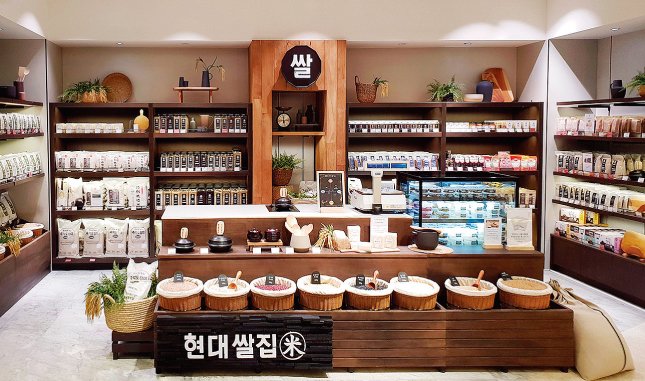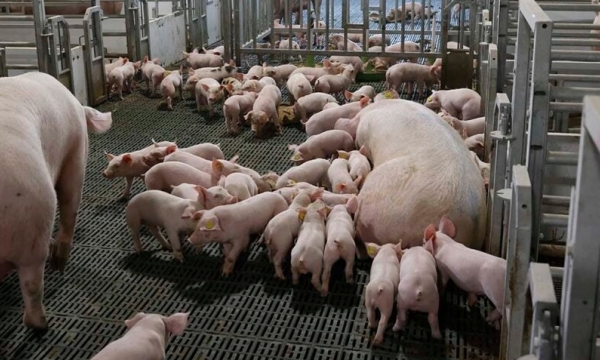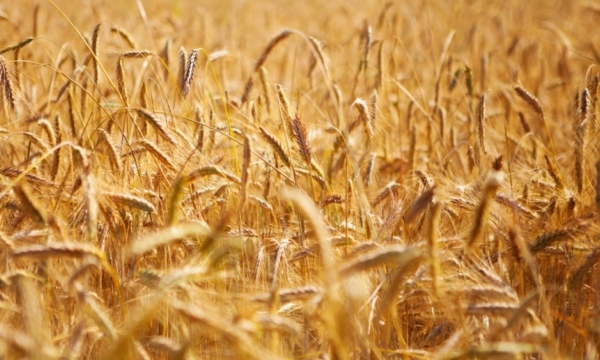May 15, 2024 | 15:02 GMT +7
May 15, 2024 | 15:02 GMT +7
Hotline: 0913.378.918
May 15, 2024 | 15:02 GMT +7
Hotline: 0913.378.918

This photo provided by the Hyundai Department Store on Dec. 19, 2018, shows a rice-only shop at its branch in Seoul. Photo: Yonhap.
Park Hye-seong, a 39-year-old mother of two, recently subscribed to a rice delivery service offered by a specialty shop featuring "premium rice" in pursuit of better tasting and healthier varieties, a decision that would have been unlikely before the coronavirus pandemic struck.
"My children have taken online classes and my husband has worked from home on and off for months, which means I have to serve meals three times per day. This unprecedented situation was stressful at first, but I've become interested in quality food ingredients, including rice," she said.
"Jipbab" -- a portmanteau of the Korean words for home and meal -- became one of the most popular words in the time of COVID-19, as many have opted or been forced to cook and eat at home rather than dining out.
The increase in home dining runs counter to decadeslong changes in lifestyle and eating habits of South Koreans. Rice consumption has been declining from the peak of 136.4 kilograms per person per year in 1970 to a record low of 59.2 kg in 2019.
"But the lifestyle changes appear to have made more people want to make their rare meals at home special and worthwhile and boosted demand for diverse and quality rice varieties. And the new coronavirus seems to have further whetted such appetites among consumers," professor Moon Jung-hoon of Seoul National University said.
According to Hyundai Department Store, sales of what it categorized as "premium rice" rose 15.7 percent in 2018 from a year earlier and 18.3 percent in 2019 on-year. During the first ten months of last year, the figure grew 23.8 percent.
"The subscription service seems somewhat expensive, but I think it's worth it. Rice itself is like a kind of delicacy, and this can be seen as an investment in my family's health, I believe," Park said.
Most Koreans usually buy 10- or 20-kg sacks of rice at supermarkets and the average price for a 20-kg sack is around 55,000 won (US$49.40).
Under the package she bought, one 2-kg sack of rice is delivered once every two weeks. Park can choose varieties that suit her palate, or receive ones recommended by the seller, and the three-month program costs 90,000 won.
That means the rice Park chose is 7,500 won per kilogram, compared with 2,750 won per kilogram of the average supermarket rice.
To cater to the growing demand for quality, more sellers have scrambled to offer various options and new services.
Lotte Mart, a major retailer in South Korea, opened its first rice-only shop at its Cheongnyangni branch in Seoul in the midst of the pandemic last year. It offers around 20 kinds of high-quality rice in smaller sacks, such as "miho," "saeilmi," and "gawaji".
Customers also can consult "rice sommeliers" to find options to suit a particular occasion. Sommeliers make recommendations according to their personal preference and explain features of each cultivar, such as nutrients, growing methods and history.
"We were able to spot changes in people's diets and eating habits caused by the new coronavirus. To better meet customers' needs, we are planning to expand rice-related services further down the road," Kim Mi-ran, a Lotte Mart official, said.
Hyundai Department Store has been running a shop specializing in premium rice, Hyundai Rice House, since late 2018 at four branches across the country.
Small boutique-type rice shops have also emerged and drawn attention from health-savvy customers and households with few family members, in particular.
"I want home-grown cultivars, fresh ones, and smaller packs to cook baby food. I recently found one rice shop that meets those needs," said Jang Eun-young, a 34 year-old primary school teacher in the city of Seongnam, just south of Seoul. Her favorite store is Village Rice Mill, which was once known as a successful crowd-funding case in the agrifood industry.
Hyundai Life Sigseo, a web-based grain shop operated by local firm Seedgen Co., recently joined the delivery app Baedal Minjok and began a service to deliver rice packages within 30 minutes.
"We offer four types of rice and six kinds of grain. The service is now available in Seoul and some metropolitan areas, but we are going to expand it across the country," a post by the company read. It has provided rice subscription services for years.
Food firms have also enjoyed brisk sales of rice-based ready-to-eat meals amid the pandemic, and are moving to diversify their lineups.
According to market researcher Nielsen Korea, the volume of the local instant rice market marked a 5.5 percent on-year growth in 2020. The market for white rice rose 3 percent, while that for multi-grain rice soared 23 percent during the January-July period of this year.
In September, CJ Cheiljedang Corp., South Korea's top food maker, released a cooked rice product, brown rice Hetbahn, and vowed to beef up its multi-grain rice sector.
Local chain Homeplus also rolled out a new instant rice product with its own brand, boasting sweet and fresh flavor by using a high-quality variety and differentiated processing methods.
"Last year, we launched several rice-based items under the new premium tag of The Bibigo with a goal to serve nutritious, well-balanced Korean food. By providing various healthy options, we will make and lead a new market," a CJ official said.
The company expects to see net profits spike nearly five-fold in 2020 from a year earlier to around 933.9 billion won, according to market research firm FnGuide.
The government, for its part, has been working to develop and distribute quality rice varieties.
"We've seen a new consumption trend in the rice market this year amid the virus situation, such as the growth in demand for function-boosting rice," Ko Jong-min, an official of the Rural Development Administration said. "We will strive further to come up with new kinds of rice with different tastes and extra nutrients."
Yonhap News

(VAN) A string of unprecedented weather and climate events has struck multiple continents in recent weeks, killing hundreds and displacing many more.

(VAN) FAO Director-General urges peace and digitalization as central to achieving the SDG agenda.

(VAN) The European Commission has approved the acquisition of sole control of East Grain of Romania by Agrofert of Czechia.

(VAN) In its quarterly outlook, Rabobank noticed a “pivotal shift” as sow herd numbers appear to stabilise after a phase of reductions.

(VAN) Food prices have risen by 0.6% in April compared to March 2024.

(VAN) Rains soaking parts of the Plains this month added critical moisture to a hard red winter wheat crop poised to rebound from back-to-back drought years.

(VAN) Global animal feed production remained steady in 2023 at 1.29 billion metric tonnes (mt), a slight decrease (0.2%) of 2.6 million mt from 2022’s estimates, according to the 2024 Agri-Food Outlook.